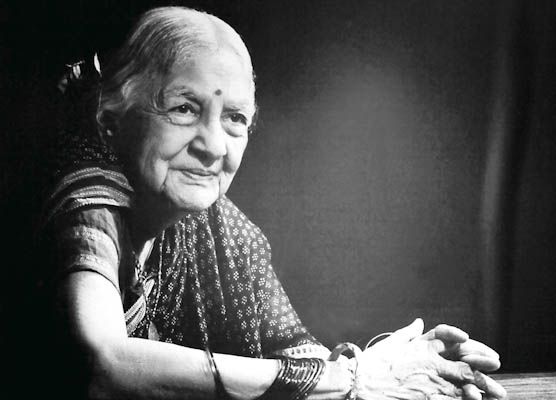For smooth Ad free experience
For smooth Ad free experience
The whirlwind of heritage and culture, a deity of Deccan school of dance unravelling her implausible journey from the Independence war to the restoration of indigenous handloom industries.

Died on 29th October 1988
The embellishment of our cultural history has been elicited time to time. The heroic tales of our great leaders are passed onto generations, teaching them to value the liberty they are setting their foot on. Amidst the abundant applause and adulation in commemorations of any of national days, one can get a slight hint of the absence of appreciation on the women’s forte. We have heard of Mahatma Gandhi, Netaji Subhas Chandra Bose, and extensive biographies of other frontier leaders, but where’s the brigade of women?
With the rationale of narrating the forgotten or enveloped saga of these miraculous warriors of the past, let your unannounced preacher unfold the memoir of Kamaladevi Chattopadhyay.
Kamaladevi, though the name sounds like one belonging to a typical Bengali household, she was born in Mangalore on April 03, 1933. The influence of her grandmother’s superiority in ancient Indian Puranas and her mother, Girijabai’s excellence in education, she grew up to be the woman holding a great intellectual prowess. Not only was she extraordinary as a pupil, but also a courageous woman at her age. Since her shadow was surrounded by nationalist leaders like Gopal Krishna Gokhale, Annie Besant, Ramabai Ranade, she started showing keenness in the aspects Swadeshi movement.
Due to the unfortunate death of her father, Ananthayya Dhareshwar, and an unnamed will of his properties, Girijabai and her two daughters, Kamaladevi and Saguna, were left with the sole option to receive a monthly allowance from her half brother. Girijabai was a lady steeled by her dignity and self-respect. She denied the petty allowance and seldom took the charge of raising her daughters with whatever’s left in her dowry possessions.
She was married at the age of fourteen but embraced widowhood just after two years. Adding to this tragedy was the event of her sister, Saguna’s death.
She didn’t choose the life of a widow that has been prescribed by sages or ancient literary experts. She continued with her studies at Chennai in Queen Mary’s College. There, Suhasini Chattopdhyay, Sarjini Naidu’s sister, was a close companion of her. To put it in a more convenient way, Suhasini acted as the destiny taking Kamaldevi to her soulmate, Harindranath Chattopdhyay.
Harindranath was an embodiment of how we imagine our dreamy partner would be. Kamaladevi's string of arts connected her with Harindranath. A love beyond the demarcations of the society- theirs was one! They got married despite the threats of the conservative society regarding widow remarriage. Harindranath and Kamladevi’s endearment was the pillar for their contribution and development in the field of theatres.
Kamaladevi broke the shackles of the society by acting in the Kannada industry’s first silent movie, Mricchakatika in 1931.
When Harindranath shifted to the foreign land of London, Kamaladevi accompanied him.
She became a pupil of Bedford College (University of London) and was rewarded a diploma in Sociology.
That was the time she received a call from her own nation, a call for help. She hurriedly returned to actively take part in Gandhiji’s Seva Dal. She received encouragement from the founder of the All India Women’s Congress (AIWC) to register herself for the Madras Provincial Legislative Assembly. Though she couldn’t secure a victory, she engraved her name as the first woman to run in the contest. Later on, she emerged as a founding member of AIWC.
She took the role of charring salt at the Bombay coast during the time of Salt Satyagraha. She went on and sold what came to be known as the ‘freedom salt’.
After the attainment of independence, her struggle didn’t lessen. She took the responsibility to establish the Indian Cooperative Union.
She worked effortlessly to rehabilitate over 50,000 refugees in the newly born town of Faridabad. She set up homes and health facilities and introduced various professions and crafty means to make money for their families. Thus began her journey as the driving force in the resurgence of handicraft and handloom industry.
Her initiative to secure the eroding fame of the indigenous craftsmen among the pizzazz of the Western world, she established a number of crafts museums of which the Theatre Crafts Museum (Delhi) was one.
To promote the lineage of art as well, she inaugurated the National Awards for Master Craftsmen. The Central Cottage Industries Emporia was also her enterprise. She was the chairperson of the Crafts Council of India- the first president of the World Crafts Council, the Pacific Region.
Apart from craft, her name glows on the prominence of the National School of Drama. Under her guidance, the Natya Institute of Kathak and Choreography spread its wings so far that it reached the affiliation of UNESCO.
She wrote around 20 books under the mixed genre of her patriotism and her love for fine arts. She was honoured by the Government of India by Padma Bhushan in 1955 and Padma Vibhushan in 1987. Google, on her 115th birth anniversary, gifted our legendary amma a doodle as winsome as her.
0
You might be interested in reading more from
